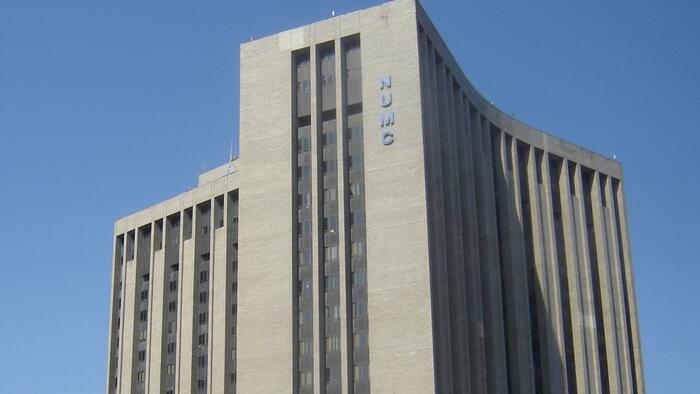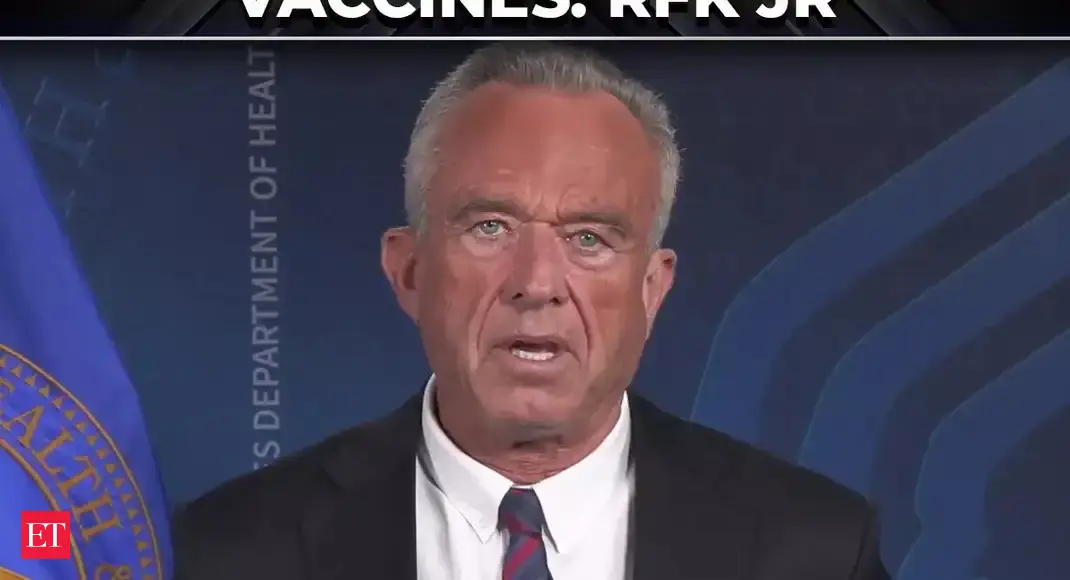Copyright ZeroHedge

Authored by Benjamin Weingarten via RealClearInvestigations, After taking the helm at New York’s financially troubled Nassau University Medical Center late last year, Megan C. Ryan stumbled upon something baffling in the books: a two-decade-long series of transactions engineered by New York State that may have shortchanged the hospital by a staggering $1 billion in matching funds. As a hospital primarily serving patients on Medicare, Medicaid, or who are uninsured, the medical center qualified for federal matching grants tied to state contributions. Ryan’s discovery indicated that the state was having the medical center itself post its share of the match – for around 20 years at $50 million per year – essentially cheating it out of the state’s matching dollars. “We just couldn’t wrap our heads around how a hospital that serves the poor would be forced to put up tens of millions of dollars” in place of state funds, Ryan told RealClearInvestigations. Ryan says she called James Dering, previously general counsel of the New York Department of Health, for a legal opinion about the financial arrangement. That opinion indicated it was improper. What seems like a local tussle over health care has all the trappings of a bigger partisan political fight in the run-up to one of the more important races for governor next year in New York. Democrat Gov. Kathy Hochul, who is running for reelection, is the central player in the dispute. The hospital – already at loggerheads with Hochul’s administration over claims the state was unduly withholding needed aid – filed suit last December against New York seeking to be made whole for the $1 billion it believed it was owed. That litigation would help set in motion a series of events culminating in the takeover of the hospital by Hochul, removing control of the public benefit corporation from the hands of Republican Nassau County executive, Bruce Blakeman; the firing of Ryan and the mass exodus of the hospital’s leaders as the new regime took over; and new legal battles between Ryan and the hospital’s Hochul-appointed leaders. Nassau University Medical Center’s ousted leaders say the takeover smacks of retaliation for their filing of a lawsuit that exposed alleged malfeasance and political corruption. Despite Dering’s opinion, the state has argued there was nothing wrong with the hospital putting up the matching funds, and that its interventions in the hospital’s operations have been necessary to rescue a debt-riddled facility that has been hobbled by Republican-linked cronyism and mismanagement in one of the few downstate areas where the GOP is competitive. “It has been for years a Republican patronage pit,” Jay Jacobs, chair of both the state’s and Nassau’s Democratic parties, told Politico. “The place is run by Republican Party operatives.” The hospital saga has already drawn scrutiny from both the FBI and Republican congressional investigators – the latter suggesting that the alleged financial scheme is part of a broader effort to save the state’s balance sheet by shifting the Medicaid burden to counties and low-income hospitals. The state’s Medicaid spending is by far the highest in the country, at $4,942 per person. Republican Rep. Elise Stefanik, who is expected to run against Hochul, has made healthcare one of her key issues, jousting publicly with the governor over their divergent policies and approaches to Medicaid. Adding to the drama is the partisan battle over federal subsidies for rising Obamacare premiums, which is fueling the ongoing federal government shutdown. The alleged financial shenanigans at the Long Island medical center focus on the convoluted funding mechanisms used to reimburse hospitals for hundreds of billions of care delivered across the country. The saga playing out in Long Island also illuminates the indelibly political nature of healthcare across the country, where two parties often divvy up and spar over control of facilities that are crucial to the lives of voters. Nassau University Medical Center is a 530-bed Level I Trauma Center located in East Meadow that serves some 270,000 patients each year. It is the only hospital providing care to all comers regardless of their finances, in the suburbs of Nassau County, east of Manhattan. Until Hochul’s state takeover of the hospital this past May, control of the center was split among state leaders, generally Democrats, and local leaders, sometimes Republicans – with county officials retaining the upper hand. The medical center’s finances have been shaky for years. A report produced by the turnaround firm Alvarez & Marsal concluded in 2020 that the only “potentially sustainable” option going forward would be to reduce the hospital staff by more than 90% – from 3,400 employees to roughly 300 – while eliminating emergency room and medical/surgical inpatient service altogether. Under Ryan, the hospital’s performance had improved. Nevertheless, after years of posting losses, the hospital had accumulated a $1.4 billion deficit as of the end of 2024. While state leaders attributed this shortfall to mismanagement, local and hospital leaders say it is because of the state’s failure to provide necessary financial support – something the state disputes. According to one of the medical center’s lawsuits, its shortfall can be traced to a scheme that worked this way: “[T]he State would instruct the Nassau County Treasurer to instruct the Hospital to make a transfer of funds to the State with the assurance that the funds would be returned to the Hospital – along with the matching federal funds – within 10 days. And indeed, like clockwork, the money was paid to the Hospital within days.” The state does not deny this description, but it rejects the hospital’s claim that the arrangement was dubious – a “conscious effort to make it appear that the nonfederal portion was coming from the County – when it was in fact coming from the Hospital” – let alone illegal. Noting that federal law allows states to cover their non-federal share of Medicaid matching funds through a variety of means, including via intergovernmental transfers from local authorities, New York countered in court filings that counties may put up matching funds and that counties may tap the hospitals themselves for the match. Although this would seem to be a straightforward legal issue, the law is murky. Healthcare experts with whom RCI spoke indicated that while intergovernmental transfers are common, they could not opine as to the legitimacy of the ones challenged in the Nassau Center’s case. The New York State Department of Health and several other county hospitals did not respond to RCI inquiries about whether this arrangement was common practice. The courts would never resolve the Nassau University Medical Center dispute. In early May, Hochul effectively seized control of the facility and quashed the hospital’s suits against New York and the hospital’s financial monitor. Blakeman, the Republican county executive, called the takeover “illegal” and vowed to file suit. The takeover had come just weeks after reports had emerged that the FBI was probing the hospital’s underlying allegations of $1 billion in withheld funds, with Blakeman and his handpicked hospital chairman, Matthew Bruderman, cooperating with the investigation. In July, congressional Republicans running the House Oversight Committee opened a probe into New York’s alleged “abuse of the Medicaid system” through withholding federal Medicaid funds to fill New York budget shortfalls, as well as the alleged years-long $1 billion scheme concerning the Nassau University Medical Center. A spokesperson for the committee told RCI that there was no update as to its investigation. As for whether other hospitals might be impacted, or analogous efforts were being undertaken in other states, the spokesperson said that the committee believes “this issue is unique to New York State Medicaid.” In response to inquiries about potential federal probes, the Justice Department and Department of Health and Human Services declined to comment. An already complicated saga became even more convoluted this summer with contrasting claims about the hospital’s current finances and its future. Before she was fired in June, Ryan had tendered a letter of resignation in May amid the governor’s takeover that was to be effective July 20. In a separate letter to the hospital’s employees obtained by RCI, Ryan stated that in contrast to claims of mismanagement that had filtered out to the press as the dispute between the hospital and state escalated, the facility had improved its operational and financial performance – including significantly increasing cash reserves – while modernizing and expanding. “[O]ur team has worked tirelessly to restore financial accountability, clinical excellence, and community trust,” according to the letter. “Despite these gains, powerful interests have spent years trying to undermine this institution and distort my record [through leaks to the press alleging mismanagement]. Their intent is not to improve health care but to consolidate political power, dismantle NUMC’s services, and potentially repurpose our hospital for private development.” In 2024, as the hospital sought additional New York aid amid accumulated losses totaling several hundred million dollars, the state required that the hospital implement changes to support financial stability, while seeming to endorse Alvarez & Marsal’s 2020 recommendation that the facility be significantly downsized. Hochul, meanwhile, has undertaken an initiative to repurpose state-owned sites as housing – including easing the ability to create higher-density housing. Richard Kessel, the chairman of the hospital’s financial overseer, the Nassau Interim Finance Authority, had previously led the county’s industrial development agency. It had provided economic incentives to aid in several housing projects, repurposing existing land for housing in the vicinity of the medical center. Seemingly connecting those dots, Bruderman, the former hospital chair, said amid news of Hochul’s upcoming takeover in April that the governor’s efforts aren’t about “saving the hospital, our employees or our patients, but rather a Democratic Party power play. We have documented evidence that Albany intends to shut down the hospital, fire the employees and utilize this land for other purposes for political benefit.” A Hochul spokesperson said of claims of a hostile takeover, “The board’s restructuring is unequivocally the best possible news for anyone who relies on NUMC.” “Due to years of gross mismanagement…the hospital is in financial peril,” the spokesperson added. “This is a desperately needed intervention. The state’s priorities for NUMC have always been ensuring quality patient care and achieving financial stability.” The medical center was reportedly poised to post an $11 million profit in 2025, after posting losses totaling over $140 million in each of the two years prior. As for any sort of land deal, a July 2025 opinion piece from a Newsday editorial board member indicated that developers had already begun to reach out to the hospital regarding the nearly 100 acres its facilities cover in a “highly desirable county that has little space to grow.” “Everything’s on the table except eliminating the safety net hospital,” its Hochul-approved chairman, Stuart Rabinowitz, told the newspaper. The implication among Hochul’s critics is that high-density housing would most likely benefit Democrats. Ryan’s attempt to tender her resignation, which was followed by a mass exodus of other hospital leaders, was rejected. Instead, in June, the new board terminated her for cause, denying her severance pay. Ryan notified the hospital that she would seek legal redress. Before she did so, in August, the hospital filed suit against her seeking $10 million in damages, claiming she had, among other things, engaged in systemic mismanagement, including in authorizing “over $1 million in excessive and improper termination payments” for herself and her exiting colleagues on the way out, and other expenses for reimbursement vastly greater than allowable amounts – including for a lobster dinner on the night one of the executives resigned. Last month, Ryan countersued, defending her record and claiming the accusations leveled against her were false and defamatory. Meanwhile, the ousted CEO asserted in her complaint that her successor was hired at a salary roughly 25% higher than her own – which she argues is discriminatory; that the new CEO “has had his hand in prior actual and attempted hospital closures much like the one that now seems imminent” at Nassau University Medical Center; and that the hospital had signed off on $10 million in no-bid contracts in just its first three months under its new board. While the legal battles intensify, the fate of the safety-net hospital remains unclear.



